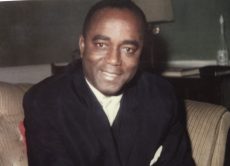
Three Wishes
Al Timothy and the Baroness were talking one night when she asked him what his three wishes would be and responded with:
- “There’s one thing I wish I could be is a really great arranger, and a really great singing voice, and I’ll take care of the rest. I’ve been in this business over twenty years, you know, but if I had to start all over again, I’d do all the same things over again.”
*Excerpt from Three Wishes: An Intimate Look at Jazz Greats ~ Compiled and Photographed by Pannonica de Koenigswarter
More Posts: baroness,history,instrumental,jazz,music,pannonica,saxophone,three,wishes
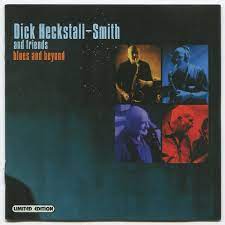
Daily Dose Of Jazz…
Richard Malden Heckstall-Smith was born on September 26, 1934 in the Royal Free Hospital, in Ludlow, Shropshire, England. Raised in Knighton, Radnorshire, he learned to play piano, clarinet and alto saxophone as a child. He attended a York boarding school but refused a second term there, instead enrolling in Gordonstoun, where his father had accepted a job as headmaster of the local grammar school.
Completing his education at Dartington Hall School, before co-leading the university jazz band at Sidney Sussex College, Cambridge, from 1953, by the age of 15 Dick had taken up the soprano sax while at Dartington. He was captivated by the sound of Sidney Bechet, then Lester Young and tenor saxophonist bebop jazzman Wardell Gray proved to be major influences for him.
An active member of the London jazz scene from the late 1950s, Heckstall-Smith did a six-month stint in 1957 with the Sandy Brown band. He joined Alexis Korner’s Blues Incorporated, a groundbreaking blues group in 1962, recording the album R&B from the Marquee.
The following year, he was a founding member of that band’s breakaway unit, The Graham Bond Organisation. Then in 1967, he joined guitarist-vocalist John Mayall’s blues rock band, Bluesbreakers. He went on to jazz rock with Colosseum until ‘71, then recorded a solo album and ventured into jazz fusion with several groups, which sustained most of his performing through the remainder of his career.
In 1984 he published his witty memoirs, The Safest Place in the World, with an expanded version, retitled Blowing the Blues, published in 2004.
Diagnosed with acute liver failure, tenor, soprano, and baritone saxophonist Dick Heckstall-Smith, who also played piano, clarinet and alto saxophone, transitioned on December 17, 2004 at 70 in Hampstead, London, England.
More Posts: bandleader,clarinet,history,instrumental,jazz,music,piano,saxophone
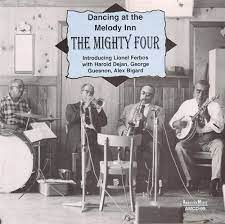
Daily Dose Of Jazz…
Alexander Louis Bigard, Jr. was born on September 25, 1899 in New Orleans, Louisiana into a musical family. His brother was Brney and his cousins were Natty Dominque and A.J. Piron. He studied drums under Louis Cottrell, Sr., and played at times with Cottrell in A.J. Piron’s band in the 1910s.
He played with the Excelsior Brass Band and Maple Leaf Orchestra, as well as with Peter DuConge, Buddy Petit, and Chris Kelly in the late 1910s and early Twenties. He was a member of Sidney Desvigne’s band in 1925, then with Kid Shots Madison. For much of the Thirties he worked with John Robichaux.
In the mid-1940s he was in Kid Rena’s band, then formed his own ensemble, the Mighty Four, in the 1950s.During the Dixieland revival period of the 1960s, he was a regular at Preservation Hall, and performed or recorded with Harold Dejan, Kid Howard, Punch Miller, De De Pierce, Billie Pierce.
Becoming deaf around 1967 he left active performance. Drummer Alex Bigard, who was involved for decades with the New Orleans jazz scene, transitioned on June 27, 1978 in his hometown.
More Posts: bandleader,drums,history,instrumental,jazz,music
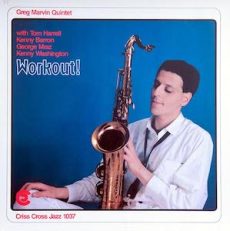
Requisites
Workout! ~ Greg Marvin Quintet | By Eddie Carter
I’ve loved the tenor sax since childhood, and this morning’s record from the library is Workout! (Criss 1037), a recent discovery and acquisition on Criss Cross Jazz by The Greg Marvin Quintet. Greg was born in 1956 and began playing the guitar at age seven. He later took up the soprano sax at age seventeen, then graduated to his primary instrument, the tenor sax. Workout is his third album, following two on his label, Hi-Hat Records. Here, he’s working with an excellent supporting cast: Tom Harrell on trumpet, Kenny Barron on piano, George Mraz on bass, and Kenny Washington on drums. My copy is the original 1988 Netherlands Stereo release.
The album opens with Zip, the leader’s toe-tapping melody that the front line states in unison. Marvin leads off with a lively opening statement, followed by a short, brisk walk by Mraz. Harrell keeps right on swinging in the third solo. Barron strolls into the following reading seamlessly, and Washington finishes the solos before the song’s ending. The ensemble shifts into second gear for Everything I Have Is Yours by Burton Lane and Harold Adamson. The front line delivers the melody briskly; then, Barron sets the table; next, Marvin goes to work. Harrell takes the third bite of this juicy tune, and Washington serves the finale with his brushwork into the theme’s restatement.
The quintet starts the melody of Dickie’s Dream by Count Basie and Lester Young swiftly. Barron opens the first solo rapidly. Marvin follows him just as quickly in the second statement, and then Harrell moves like mad next. Mraz and Washington share a vigorous conversation, followed by the front line’s swift finale ahead of the climax. Side Two continues the upbeat mood with the ensemble’s theme of Subconscious-Lee by Lee Konitz. Marvin takes off like a rocket in the opening statement. Harrell continues motoring along quickly in the following reading. Barron’s fingers flow with equal intensity next; Mraz gives an exciting performance preceding the group’s return.
Lover Man by Jimmy Davis, Roger Ramirez, and Jimmy Sherman begins with the front line’s bewitching introduction, which blossoms into the quintet’s melody. Kenny displays a tender touch of grace and beauty in the opening solo; next, George adds a seductive sensuality to the finale into the ensemble’s gentle conclusion. Gentle Giant is Greg Marvin’s lively tribute to Warne Marsh. The quintet swings from the start of the front line’s collective melody. The leader kicks off the opening statement, and Harrell follows with a splendid performance. Barron moves smoothly through the following reading, and then Mraz dazzles one final time into the theme’s reprise and exit.
Greg Marvin did triple duty as leader, composer and producer of Workout, and Jim Anderson was the album’s recording engineer. The sound quality is excellent, with a gorgeous soundstage that brings the musicians to your listening room with exceptional clarity. I was also very impressed with what I’ve heard from Greg Marvin and his colleagues. The music itself is excellent, as are the solos on every track. I would have loved to hear more from the saxophonist, and I’ll be hunting for his other releases. If you’re a tenor sax fan, I recommend Workout! by The Greg Marvin Quintet on your next vinyl hunt. It’s an easy album to listen to and perfect to enjoy while relaxing during the day or evening!
~ The Greg Marvin Quartet (Hi-Hat Records GM-1), I’ll Get By (Hi-Hat Records GM-2) – Source: Discogs.com ~ Lover Man – Source: JazzStandards.com ~ Everything I Have Is Yours – Source: Wikipedia.org © 2023 by Edward Thomas Carter
More Posts: choice,classic,collectible,collector,history,instrumental,jazz,music,saxophone
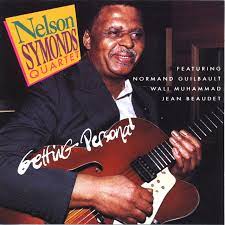
Daily Dose Of Jazz…
Nelson Symonds was born on September 24, 1933 in Upper Hammonds Plains, Nova Scotia, Canada. After pursuing the banjo at a young age he switched to the guitar. He gained his first performance experience touring on a travelling carnival from 1955 to 1958 throughout the United States. Upon returning to Canada he settled in Montreal in 1958 and played in the group The Stablemates led by Alfie Wade Jr.
During the Sixties and 1970s Nelson played mainly with bassist Charlie Biddle and drummer Norman Marshall Villeneuve at The Black Bottom, Rockhead’s Paradise and other similar venues. The 1970s saw him and Biddle performing as a duo in numerous Laurentian resorts. Throughout his 30-plus year career, he played at all of the major jazz venues in Montreal including Upstairs, Biddles and Cafe La Bohème among others.
Symonds reportedly resisted recording until the 1990s, cutting three collaborative albums, and one as leader. Unfortunately for the jazz world, in 1996 he underwent a quadruple bypass that put an end to his musical career.
Guitarist Nelson Symonds transitioned on October 11, 2008 in Montreal, Quebec, Canada due to a heart attack at the age of 75.
More Posts: bandleader,guitar,history,instrumental,jazz,music




